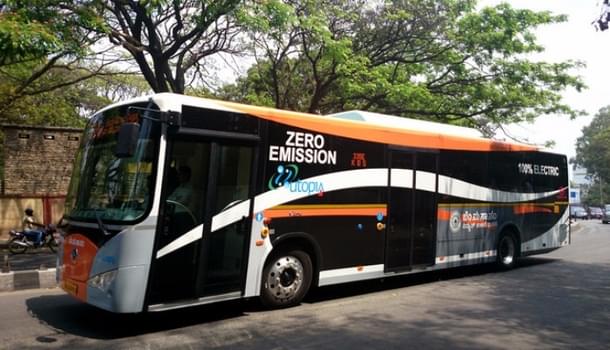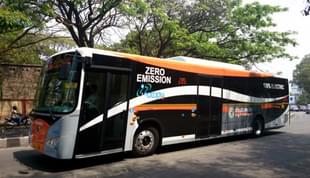Technology
NITI Aayog Estimates $60 Billion Savings If We Switched To EVs- They Are Not Wrong
Srikanth Ramakrishnan
May 14, 2017, 09:06 PM | Updated 09:05 PM IST
Save & read from anywhere!
Bookmark stories for easy access on any device or the Swarajya app.


Earlier this month, Union Minister for Power Piyush Goyal had said that India was looking to be a country with only electric vehicles by 2030. A wise decision, given that India currently spends roughly $64 billion on importing crude oil, a number that interestingly fell by nearly half from the previous year.
However, the move has opened up a newer set of questions, most of which are more or less along the same lines of ‘shortage of power’, vs ‘eco-friendly energy’, etc. The answers to most of these questions do yield positive responses however.
The move away from conventional petroleum and diesel vehicles started with the advent of Compressed Natural Gas (CNG)- powered vehicles. A Livemint report suggests that a petrol-based sedan costs an average of Rs 5.5 per km, a diesel one costs Rs 3.8, and a CNG-powered vehicle costs Rs 1.9 per km. Apart from this, it is not very expensive to convert a petrol-based vehicle into a CNG-based one.
However, CNG’s major constraint is that it cannot be transported by trucks like petrol or diesel, and requires a pipeline network to be established. Thus, CNG as an alternative fuel is restricted to several cities like Mumbai, Pune, Ahmedabad and the National Capital Region (NCR). The NCR went for CNG only because of a Supreme Court order in 1998 that mandated all public-transport vehicles be run on CNG. In spite of this, CNG vehicle owners face issues in the NCR due to a limited number of fuel outlets.
Electric vehicles in India have not yet taken off due to a wide variety of reasons. The primary reason is the high capital cost incurred. The most expensive component of an EV is the battery. A standard 35kWh battery, which could be considered the equivalent of a standard 40-litre fuel tank costs $8800, which works out to Rs 5.7 lakh, add to this numerous taxes and import duties. Thus, the capital cost is the biggest stumbling block for an EV.
Further, lack of charging points keeps them practically unviable. While the NITI Aayog plan for using only electric vehicles may have the same effect on EVs that the SC order had on CNG vehicles, mandating any kind of vehicle will require for associated infrastructure to be set up first.
A study conducted by NITI Aayog and the Rocky Mountain Institute (RMI) titled India Leaps Ahead: Transformative Mobility Solutions For All estimates that by 2030, India would be able to save close to $60 billion in fuel costs if we were to switch to electric vehicles, which works out to close to 156 million tonnes of oil. At the same time, it would work in reducing one gigatonne of carbon emissions. While releasing the report, NITI Aayog CEO Amitabh Kant said that “The challenge is how we do it quickly. How do we do it to scale and size.”
How would India save so much money by merely switching to EVs?
The answer is quite simple. A 2016 Guardian report stated that an EV is only as clean its power supply. This makes perfect sense in the EV picture. Power generated at source is more efficient than power generated in the vehicle, because mass production of energy is cheaper and cleaner.
Unlike in a car (at present), electricity generation can be done in a myriad of ways. Apart from conventional coal and gas based projects, electricity can be generated from water, wind, solar sources and most importantly nuclear power. In the case of renewable electricity, power generation units have the capital cost of setting up the required infrastructure, after which, the running cost of operations and maintenance is the only major cost involved. The cost of fuel is eliminated, thus keeping the rates of the power generated steady. Further, with India targeting 100 GW of solar energy by 2022, production of electricity will become cheaper. With more distribution companies (Discoms) joining the Centre in increasing coverage as well as reducing transmission costs by upgrading equipment, the overhead costs involved in the sector also go down. The net result? Power supply becomes more efficient and cheaper.
The power generation and supply sector is only poised to improve with passing time. That solves one part of the problem in getting EVs on the road.
As I had written earlier, setting up of a pan-India charging system is the need of the hour. This can only be done if government-run transport corporations start using electric buses. Since these bodies have large depots to park buses, they can also be used by the general public to charge vehicles when during the day when buses are out on the streets. If NITI Aayog’s plan of having only electric vehicles and phasing out diesel vehicles in the public transport scene pans out well, the problem of charging vehicles could be solved in a decade from now.
The most expensive and crucial part of EVs is their high initial cost. In spite of the government offering subsidies under its FAME scheme, EVs are still expensive? Why?
Batteries. Batteries, depending on the vehicle can cost anywhere from 30 per cent to 50 per cent of the total cost of the vehicle. What the government needs to do is to get manufacturers to start locally developing them. Locally manufactured units, plus reduced taxes on them, could go a long way in reducing the cost of owning an EV in India. Until then, people will shy away from them and pay for a cheaper fuel-based car even though it may cost more to operate it in the long run.
Further, batteries, once they live their life in the vehicle, can be used for other purposes. As Swarajya’s Aashish Chandorkar opines, once a battery is depleted its complete capacity and can only store a fraction of its original capacity, it can be used to power e-rickshaws, agricultural pumpsets and even telecom towers. All of these too, are heavily dependent on fuel today, and conversion to electric systems would mean that the total fuel consumption will go down.
The key to EVs being economical to both the user and the country in the long run is to:
One, Locally produce batteries that can meet the domestic demand and in case of a surplus be exported.
Two, Produce cheaper power that would reduce the costs of operations for a whole lot of sectors, not just operating vehicles. Nuclear power, which today forms 1.9 per cent of the total power produced in India, forms nearly 20 per cent of the power produced in the United States. With Nuclear getting cheaper and safer, we can produce the clean energy to keep our EVs clean.
ISRO recently demonstrated a solar-powered vehicle. In a tropical country that sees the sun for more than one-third of a day, this can go a long way in helping us charge a vehicle on the go. Japanese automotive major Mitsubishi has been working on transmitting power wirelessly using microwaves, as part of a space based solar power (SBSP) initiative, stating the intention to also use to technology to charge vehicles.
At the end of the day, producing cheaper and cleaner electricity is a continuous process that is already happening. If our vehicles switch over to this cheap energy, the costs of importing and refining fuel will go down over time, making it more economical to have an EV. The future lies in making them economical as well as practical.
Srikanth’s interests include public transit, urban management and transportation infrastructure.





